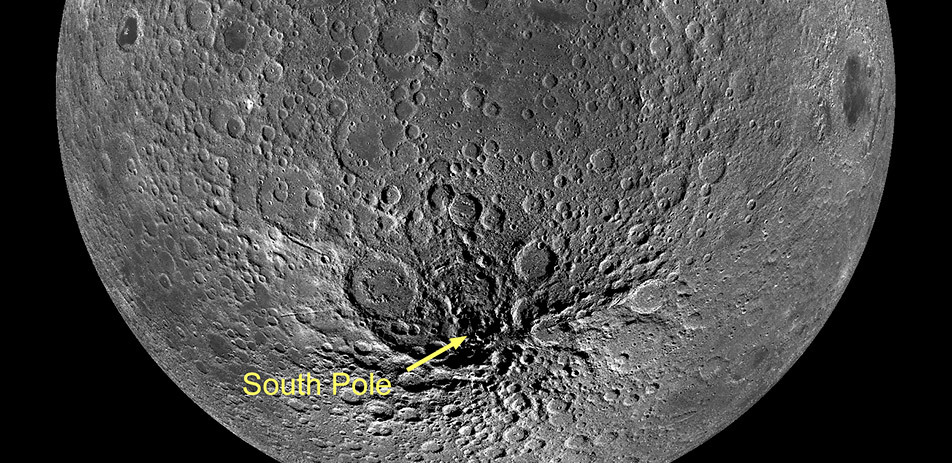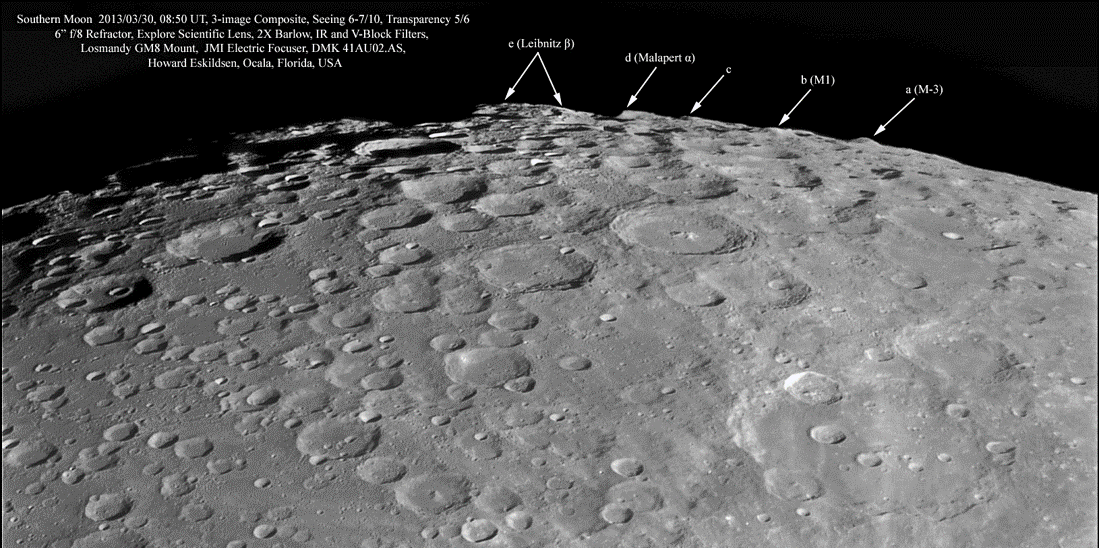
Lunatic’s Corner: The South Pole-Aitken Basin
October 2023 :
Although not visible from Earth, the South Pole-Aitken Basin is a unique and interesting feature on the Moon’s surface. It was not discovered until Moon orbiting satellites detected it in the 1960’s, though some earth-bound astronomers previously noted the ridge of mountains on the southern limb of the Moon and suspected a large crater or basin. After its initial discovery, the full extent of its size and topography were not known until the NASA Clementine and Galileo missions of the 1990’s.
This basin is the largest, deepest, and oldest impact basin on the Moon. It is 1,600 miles wide, and averages 4 to 5 miles deep. Some of the mountains on the southern side of the basin are estimated to be over 30,000 feet, even higher than Mount Everest! Keep in mind that the Moon is only about ¼ the size of the Earth. The south Pole-Aitken Basin is thought to have been formed between 4.2 and 4.3 billion years ago by a 140-mile-wide impactor, striking the Moon at an oblique angle. This occurred during the pre-Nectarian epoch, a very early stage in the Moon’s evolution.

The southern rim of the basin, informally known as the Leibnitz Mountains, are visible at full Moon during a favorable libration. Several peaks have been named (or numbered) and are observable even with small telescopes. Some parts of the Moon in this region, near the south pole, are in permanent shadow and it is suspected that water in the form of ice may be present. A source of water would be necessary to sustain any type of base or station on the Moon, so this area has been of great interest lately.
Robert Grant Aitken, for whom this basin was named, was an American and native Californian astronomer who lived from 1864-1951. After his career as a mathematics and astronomy professor, he was appointed an assistant astronomer at Lick Observatory in 1895. He began a systematic study of double stars and by 1915, Robert Grant Aitken had discovered and measured the orbits of over 3000 double stars. He received the prestigious Bruce Medal for his work in cataloguing these stars. He became Associate Director of Lick Observatory in 1923 and Director in 1930. He was also President of the Astronomical Society of the Pacific from 1899-1915. You may recognize this group’s name since today they are the contractor that operates NASA’s Night Sky Network, a coalition of amateur astronomy clubs to which Skyscrapers belongs. Another large impact crater is also named after Aitken. It is located on the far-side of the Moon and defines the northern extent of the South Pole-Aitken Basin.
Next full Moon, which is not usually a good time for observing, take your telescope out and try to identify the peaks of the Leibnitz Mountains and know that on the far-side of those mountains, the Moon’s largest impact basin looms.
Michael Corvese is a confirmed lunatic of many years regardless of his recent interest in lunar observing.



